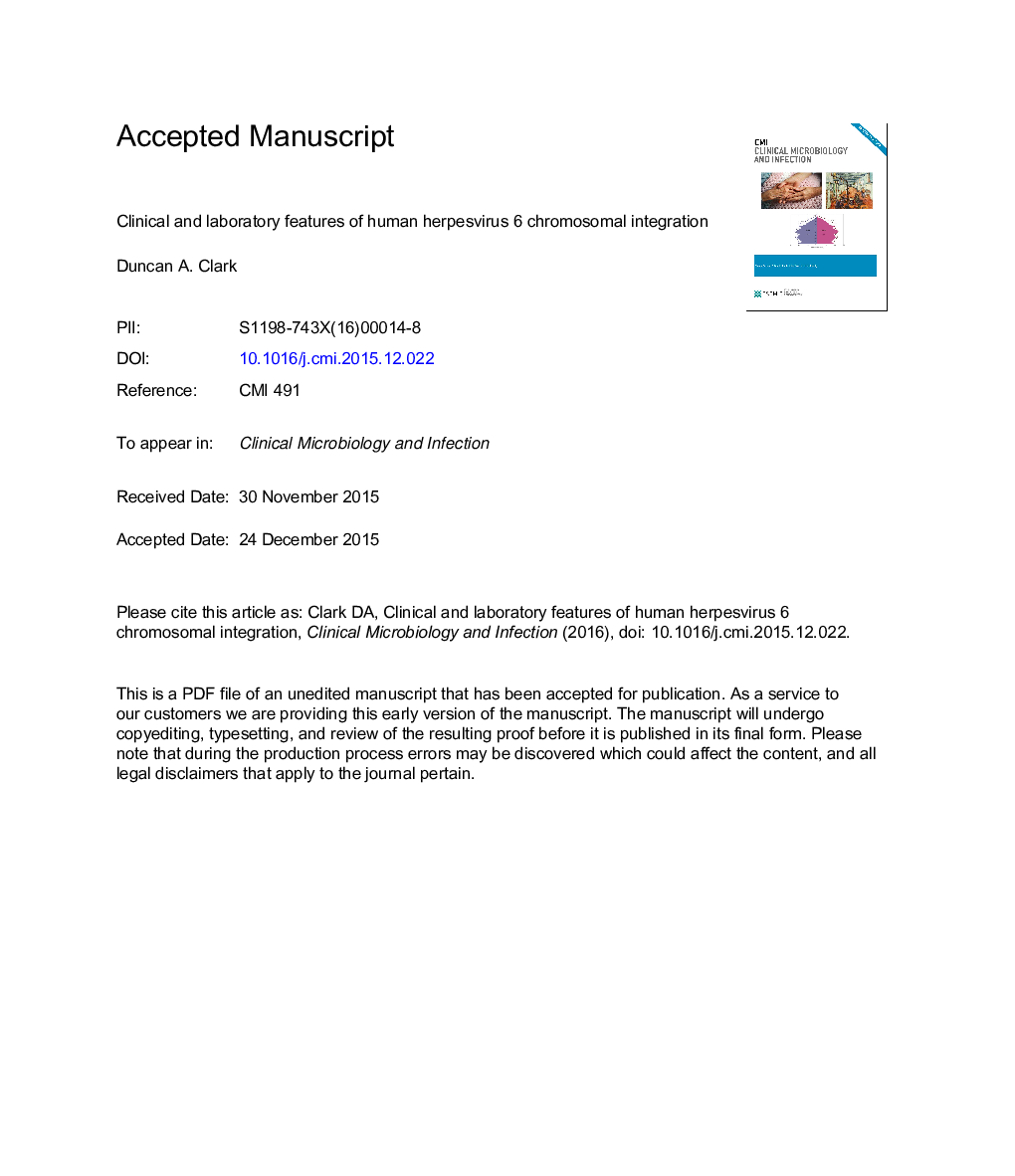| کد مقاله | کد نشریه | سال انتشار | مقاله انگلیسی | نسخه تمام متن |
|---|---|---|---|---|
| 6128882 | 1222143 | 2016 | 26 صفحه PDF | دانلود رایگان |
عنوان انگلیسی مقاله ISI
Clinical and laboratory features of human herpesvirus 6 chromosomal integration
ترجمه فارسی عنوان
ویژگی های بالینی و آزمایشگاهی ویروس انسانی کروموزومی 6 انسانی
دانلود مقاله + سفارش ترجمه
دانلود مقاله ISI انگلیسی
رایگان برای ایرانیان
کلمات کلیدی
موضوعات مرتبط
علوم زیستی و بیوفناوری
ایمنی شناسی و میکروب شناسی
میکروب شناسی
چکیده انگلیسی
Human herpesvirus 6 (HHV-6) comprises two separate viruses, HHV-6A and HHV-6B, although this distinction is not commonly made. HHV-6B is ubiquitous in the population with primary infection usually occurring in early childhood, and often resulting in febrile illness. HHV-6B is also recognized as a pathogen in the immunocompromised host, particularly in transplant recipients. HHV-6A is less well characterized and may have a more restricted prevalence. Both viruses are unique among the human herpesviruses in that the entire viral genome can be found integrated into the telomeric regions of host cell chromosomes. Approximately 1% of persons have inherited integrated viral sequences through the germline, and these individuals characteristically have very high viral loads in blood and other sample types. Emerging evidence suggests that HHV-6A and HHV-6B chromosomal integration may not just be an uncommon biological observation, but more likely a characteristic of the replication properties of these viruses. The integrated viral genome appears capable of excision from the chromosomal site and potentially allows viral replication. The clinical consequences of inherited chromosomally integrated HHV-6 have yet to be fully appreciated.
ناشر
Database: Elsevier - ScienceDirect (ساینس دایرکت)
Journal: Clinical Microbiology and Infection - Volume 22, Issue 4, April 2016, Pages 333-339
Journal: Clinical Microbiology and Infection - Volume 22, Issue 4, April 2016, Pages 333-339
نویسندگان
D.A. Clark,
